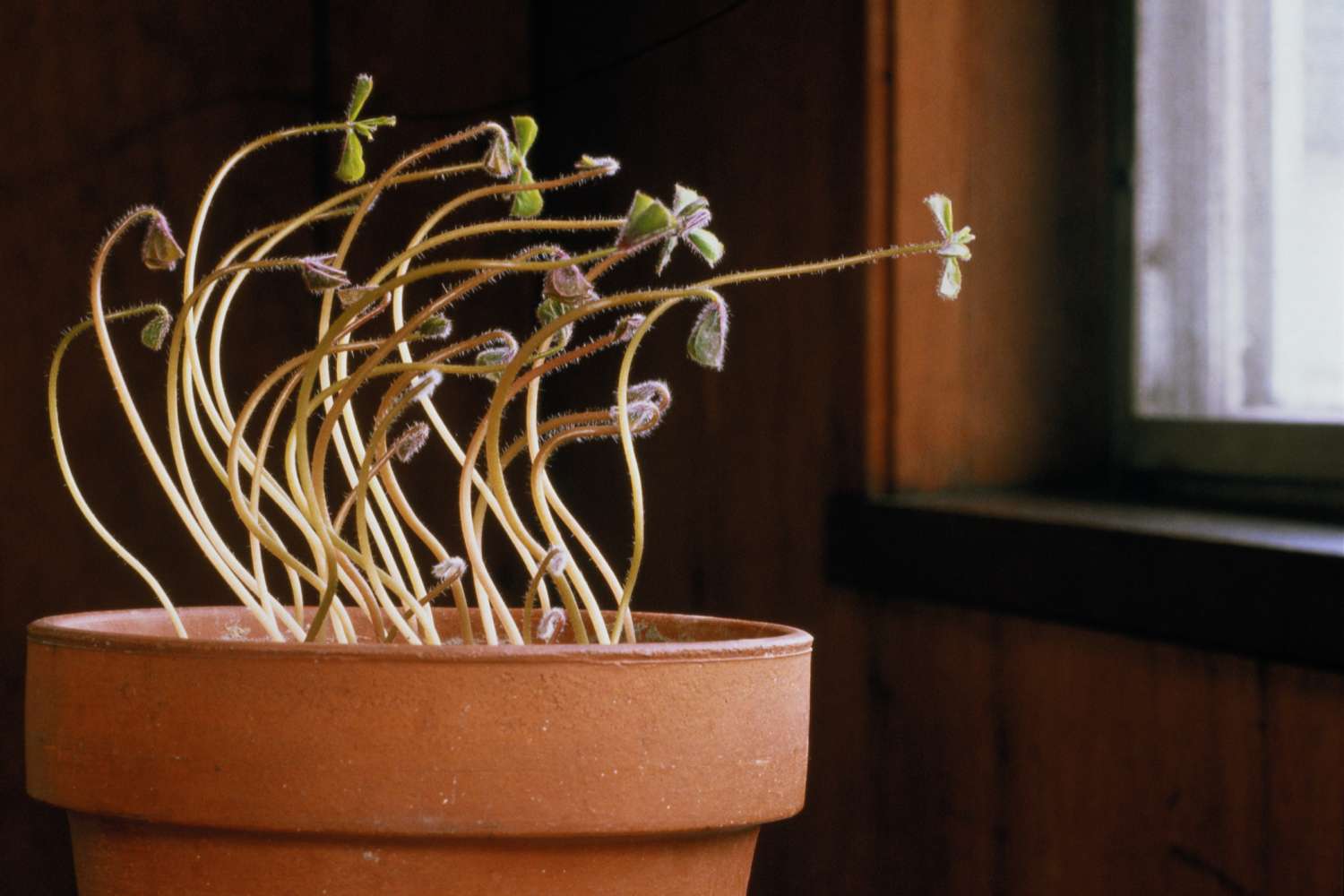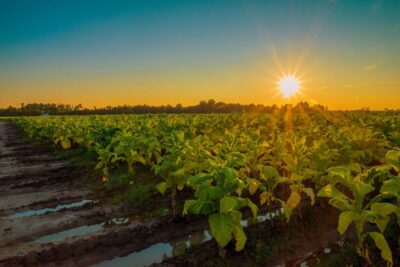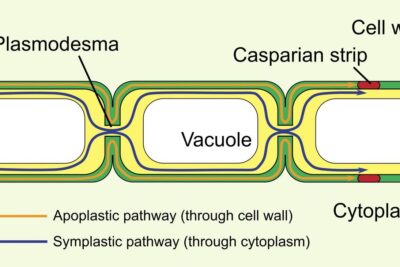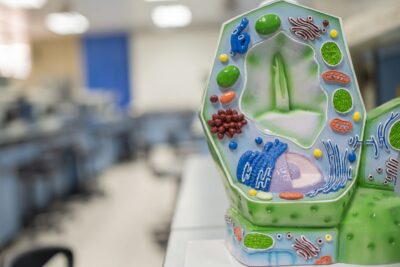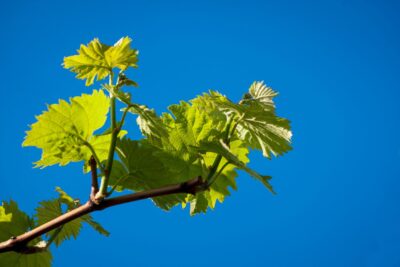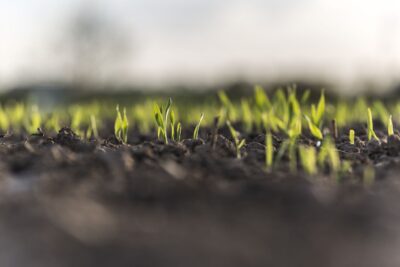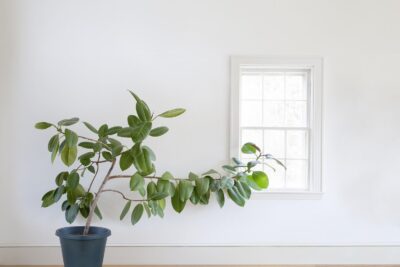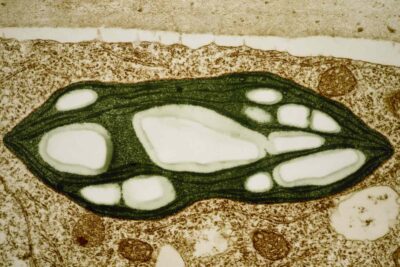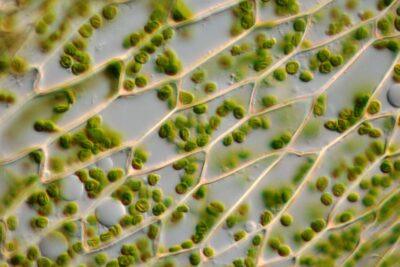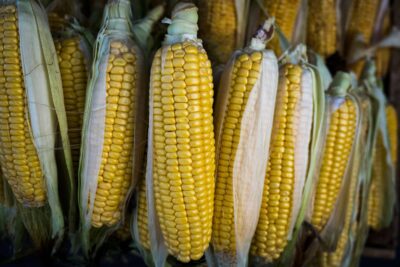
Plants, like animals and other organisms, must adapt to their constantly-changing environments. While animals are able to relocate from one place to another when environmental conditions become unfavorable, plants are unable to do the same. Being sessile (unable to move), plants must find other ways of handling unfavorable environmental conditions. Plant tropisms are mechanisms by which plants adapt to environmental changes. A tropism is a growth toward or away from a stimulus. Common stimuli that influence plant growth include light, gravity, water, and touch. Plant tropisms differ from other stimulus generated movements, such as nastic movements, in that the direction of the response depends on the direction of the stimulus. Nastic movements, such as leaf movement in carnivorous plants, are initiated by a stimulus, but the direction of the stimulus is not a factor in the response.
Plant tropisms are the result of differential growth. This type of growth occurs when the cells in one area of a plant organ, such as a stem or root, grow more quickly than the cells in the opposite area. The differential growth of the cells directs the growth of the organ (stem, root, etc.) and determines the directional growth of the entire plant. Plant hormones, like auxins, are thought to help regulate the differential growth of a plant organ, causing the plant to curve or bend in response to a stimulus. Growth in the direction of a stimulus is known as positive tropism, while growth away from a stimulus is known as a negative tropism. Common tropic responses in plants include phototropism, gravitropism, thigmotropism, hydrotropism, thermotropism, and chemotropism.
Lectura relacionada:
 Divisiones del Cerebro: Prosencéfalo, Mesencéfalo, Rombencéfalo
Divisiones del Cerebro: Prosencéfalo, Mesencéfalo, RombencéfaloPhototropism
Plant hormones direct plant body development in response to a stimulus, like light.
ttsz/iStock/Getty Images Plus
Phototropism is the directional growth of an organism in response to light. Growth toward light, or positive tropism is demonstrated in many vascular plant, such as angiosperms, gymnosperms, and ferns. Stems in these plants exhibit positive phototropism and grow in the direction of a light source. Photoreceptors in plant cells detect light, and plant hormones, such as auxins, are directed to the side of the stem that is furtherest from the light. The accumulation of auxins on the shaded side of the stem causes the cells in this area to elongate at a greater rate than those on the opposite side of the stem. As a result, the stem curves in the direction away from the side of the accumulated auxins and toward the direction of the light. Plant stems and leaves demonstrate positive phototropism, while roots (mostly influenced by gravity) tend to demonstrate negative phototropism. Since photosynthesis conducting organelles, known as chloroplasts, are most concentrated in leaves, it is important that these structures have access to sunlight. Conversely, roots function to absorb water and mineral nutrients, which are more likely to be obtained underground. A plant's response to light helps to ensure that life preserving resources are obtained.
Heliotropism is a type of phototropism in which certain plant structures, typically stems and flowers, follow the path of the sun from east to west as it moves across the sky. Some helotropic plants are also able to turn their flowers back toward the east during the night to ensure that they are facing the direction of the sun when it rises. This ability to track the sun's movement is observed in young sunflower plants. As they become mature, these plants lose their heliotropic ability and remain in an eastward-facing position. Heliotropism promotes plant growth and increases the temperature of eastward-facing flowers. This makes heliotropic plants more attractive to pollinators.
Lectura relacionada:
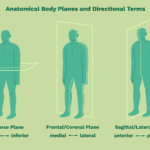 Términos Direccionales Anatómicos y Planos Corporales
Términos Direccionales Anatómicos y Planos CorporalesThigmotropism
Tendrils are modified leaves that wrap around objects giving support to the plant. They are examples of thigmotropism.
Ed Reschke/Stockbyte/Getty Images
Thigmotropism describes plant growth in response to touch or contact with a solid object. Positive thigmostropism is demonstrated by climbing plants or vines, which have specialized structures called tendrils. A tendril is a thread-like appendage used for twinning around solid structures. A modified plant leaf, stem, or petiole may be a tendril. When a tendril grows, it does so in a revolving pattern. The tip bends in various directions forming spirals and irregular circles. The motion of the growing tendril almost appears as if the plant is searching for contact. When the tendril makes contact with an object, sensory epidermal cells on the surface of the tendril are stimulated. These cells signal the tendril to coil around the object.
Tendril coiling is a result of differential growth as cells not in contact with the stimulus elongate faster than the cells that make contact with the stimulus. As with phototropism, auxins are involved in the differential growth of tendrils. A greater concentration of the hormone accumulates on the side of the tendril not in contact with the object. The twining of the tendril secures the plant to the object providing support for the plant. The activity of climbing plants provides better light exposure for photosynthesis and also increases the visibility of their flowers to pollinators.
While tendrils demonstrate positive thigmotropism, roots can exhibit negative thigmotropism at times. As roots extend into the ground, they often grow in the direction away from an object. Root growth is primarily influenced by gravity and roots tend to grow below ground and away from the surface. When roots make contact with an object, they often change their downward direction in response to the contact stimulus. Avoiding objects allows roots to grow unimpeded through the soil and increases their chances of obtaining nutrients.
Lectura relacionada: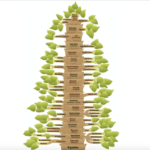 Qué Es La Filogenia? Definición y Ejemplos
Qué Es La Filogenia? Definición y Ejemplos
Gravitropism
This image shows the main stages in the germination of a plant seed. In the third image, the root grows downwards in response to gravity, while in the fourth image the embryonic shoot (plumule) grows up against gravity.
Power and Syred/Science Photo Library/Getty Images
Gravitropism or geotropism is growth in response to gravity. Gravitropism is very important in plants as it directs root growth toward the pull of gravity (positive gravitropism) and stem growth in the opposite direction (negative gravitropism). The orientation of a plant's root and shoot system to gravity can be observed in the stages of germination in a seedling. As the embryonic root emerges from the seed, it grows downward in the direction of gravity. Should the seed be turned in such a way that the root points upward away from the soil, the root will curve and reorient itself back toward the direction of the gravitational pull. Conversely, the developing shoot orients itself against gravity for upward growth.
The root cap is what orients the root tip toward the pull of gravity. Specialized cells in the root cap called statocytes are thought to be responsible for gravity sensing. Statocytes are also found in plant stems, and they contain organelles called amyloplasts. Amyloplasts function as starch storehouses. The dense starch grains cause amyloplasts to sediment in plant roots in response to gravity. Amyloplast sedimentation induces the root cap to send signals to an area of the root called the elongation zone. Cells in the elongation zone are responsible for root growth. Activity in this area leads to differential growth and curvature in the root directing growth downward toward gravity. Should a root be moved in such a manner as to change the orientation of the statocytes, amyloplasts will resettle to the lowest point of the cells. Changes in position of amyloplasts are sensed by statocytes, which then signal the elongation zone of the root to adjust the direction of curvature.
Auxins also plays a role in plant directional growth in response to gravity. The accumulation of auxins in roots slows growth. If a plant is placed horizontally on its side with no exposure to light, auxins will accumulate on the lower side of the roots resulting in slower growth on that side and downward curvature of the root. Under these same conditions, the plant stem will exhibit negative gravitropism. Gravity will cause auxins to accumulate on the lower side of the stem, which will induce the cells on that side to elongate at a faster rate than the cells on the opposite side. As a result, the shoot will bend upward.
Hydrotropism
This image shows mangrove roots near water in the Iriomote National Park of the Yaeyama Islands, Okinawa, Japan.
Ippei Naoi/Moment/Getty Images
Hydrotropism is directional growth in response to water concentrations. This tropism is important in plants for protection against drought conditions through positive hydrotropism and against water over-saturation through negative hydrotropism. It is especially important for plants in arid biomes to be able to respond to water concentrations. Moisture gradients are sensed in plant roots. The cells on the side of the root closest to the water source experience slower growth than those on the opposite side. The plant hormone abscisic acid (ABA) plays an important role in inducing differential growth in the root elongation zone. This differential growth causes roots to grow toward the direction of water.
Before plant roots can exhibit hydrotropism, they must overcome their gravitrophic tendencies. This means that the roots must become less sensitive to gravity. Studies conducted on the interaction between gravitropism and hydrotropism in plants indicate that exposure to a water gradient or lack of water can induce roots to exhibit hydrotropism over gravitropism. Under these conditions, amyloplasts in root statocytes decrease in number. Fewer amyloplasts means that the roots are not as influenced by amyloplast sedimentation. Amyloplast reduction in root caps helps to enable roots to overcome the pull of gravity and move in response to moisture. Roots in well-hydrated soil have more amyloplasts in their root caps and have a much greater response to gravity than to water.
More Plant Tropisms
Eight pollen grains are seen, clustered around a finger-like projection, part of the opium flowers stigma. Several pollen tubes are visible.
Dr. Jeremy Burgess/Science Photo Library/Getty Images
Two other types of plant tropisms include thermotropism and chemotropism. Thermotropism is growth or movement in response to heat or temperature changes, while chemotropism is growth in response to chemicals. Plant roots may exhibit positive thermotropism in one temperature range and negative thermotropism in another temperature range.
Plant roots are also highly chemotropic organs as they may respond either positively or negatively to the presence of certain chemicals in the soil. Root chemotropism helps a plant to access nutrient-rich soil to enhance growth and development. Pollination in flowering plants is another example of positive chemotropism. When a pollen grain lands on the female reproductive structure called the stigma, the pollen grain germinates forming a pollen tube. The growth of the pollen tube is directed toward the ovary by the release of chemical signals from the ovary.
Sources
- Atamian, Hagop S., et al. “Circadian regulation of sunflower heliotropism, floral orientation, and pollinator visits.” Science, American Association for the Advancement of Science, 5 Aug. 2016, science.sciencemag.org/content/353/6299/587.full.
- Chen, Rujin, et al. "Gravitropism in Higher Plants." Plant Physiology, vol. 120 (2), 1999, pp. 343-350., doi:10.1104/pp.120.2.343.
- Dietrich, Daniela, et al. "Root hydrotropism is controlled via a cortex-specific growth mechanism." Nature Plants, vol. 3 (2017): 17057. Nature.com. Web. 27 Feb. 2018.
- Esmon, C. Alex, et al. “Plant tropisms: providing the power of movement to a sessile organism.” International Journal of Developmental Biology, vol. 49, 2005, pp. 665–674., doi:10.1387/ijdb.052028ce.
- Stowe-Evans, Emily L., et al. "NPH4, a Conditional Modulator of Auxin-Dependent Differential Growth Responses in Arabidopsis." Plant Physiology, vol. 118 (4), 1998, pp. 1265-1275., doi:10.1104/pp.118.4.1265.
- Takahashi, Nobuyuki, et al. "Hydrotropism Interacts with Gravitropism by Degrading Amyloplasts in Seedling Roots of Arabidopsis and Radish." Plant Physiology, vol. 132 (2), 2003, pp. 805-810., doi:10.1104/pp.018853.

